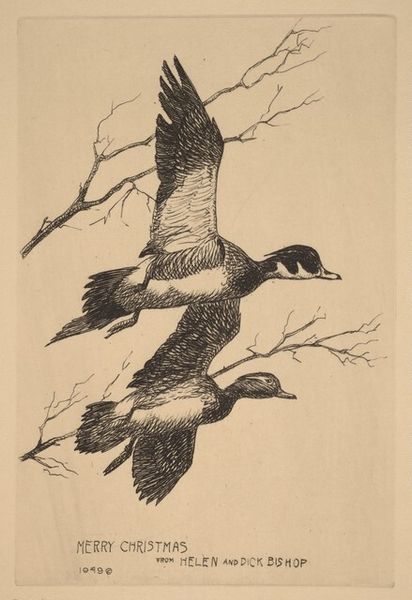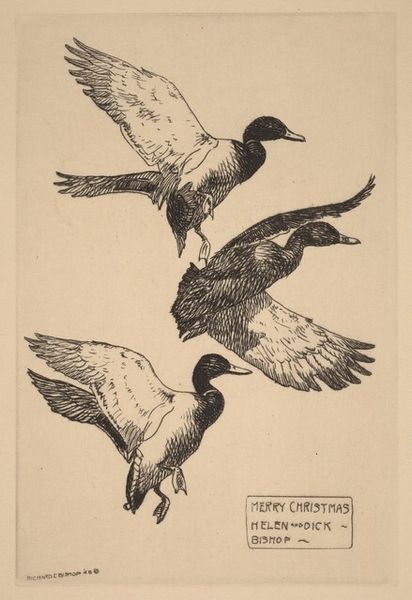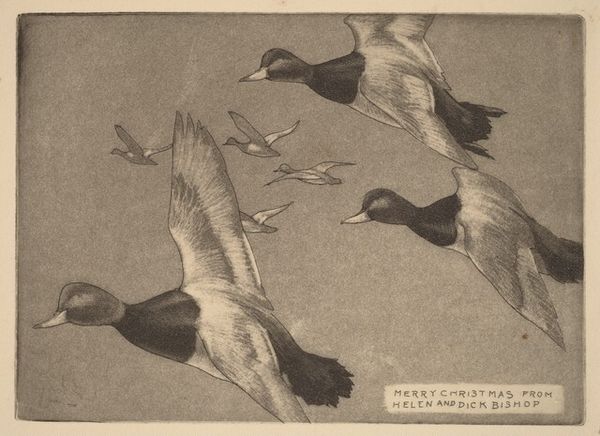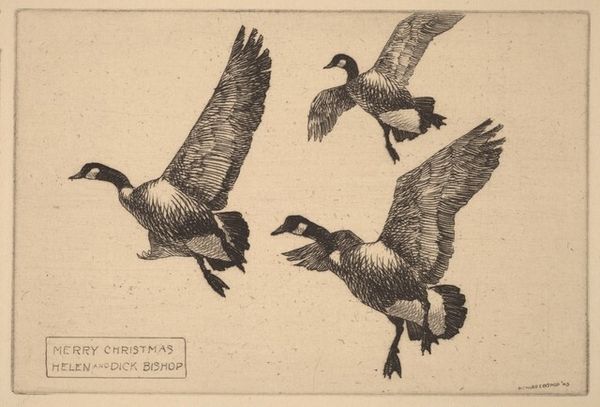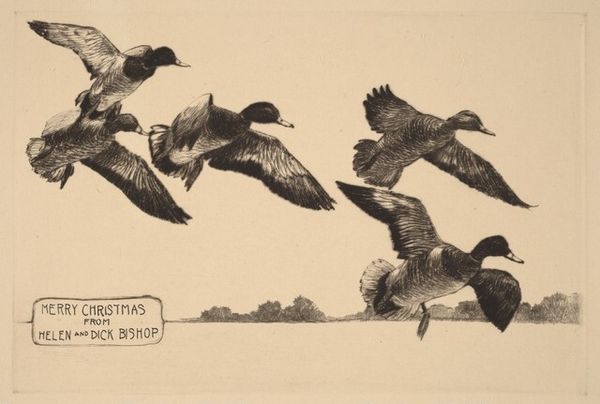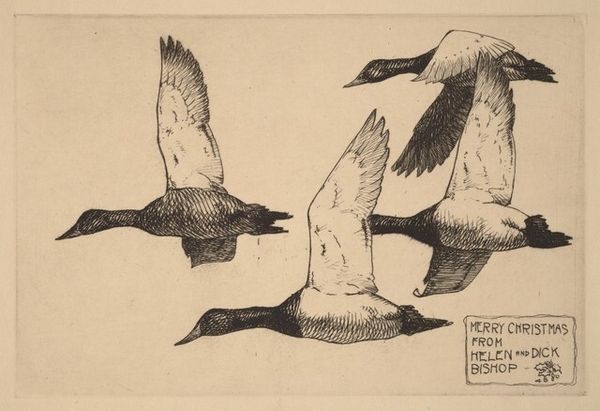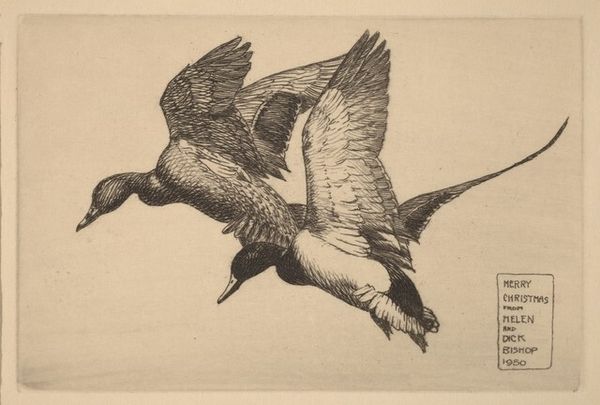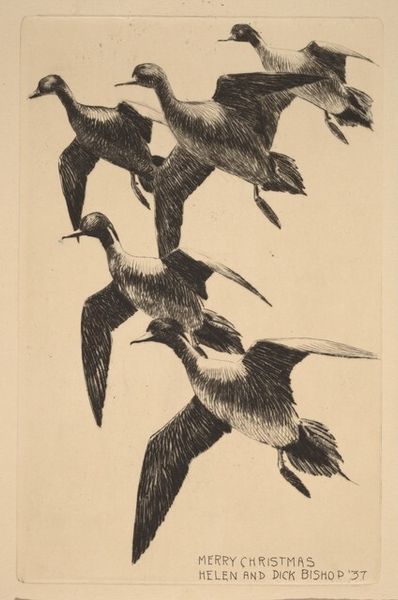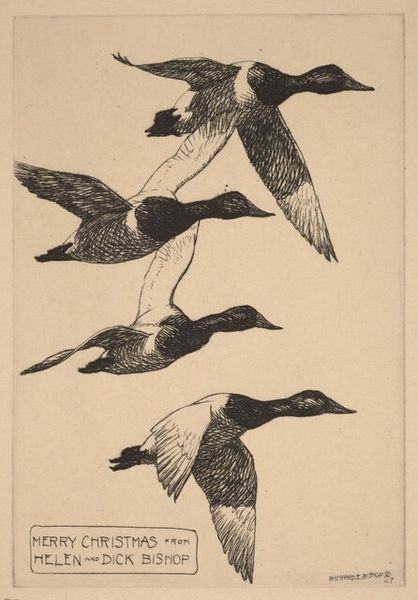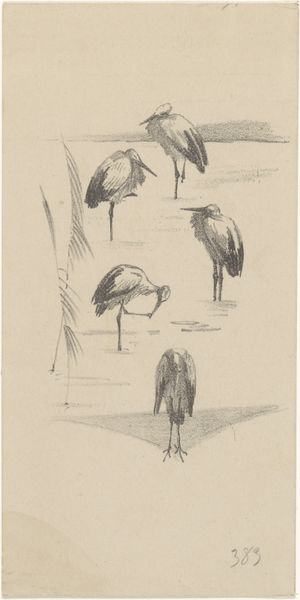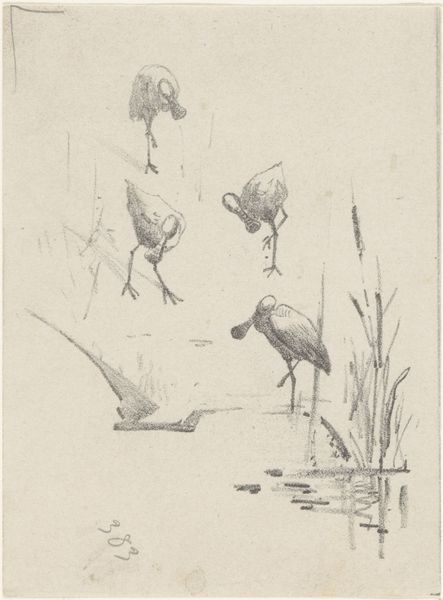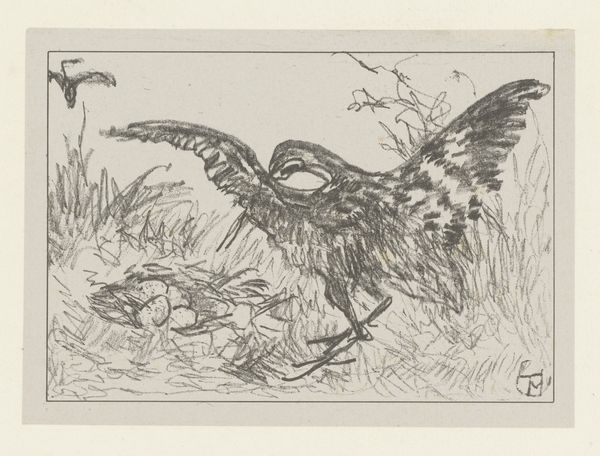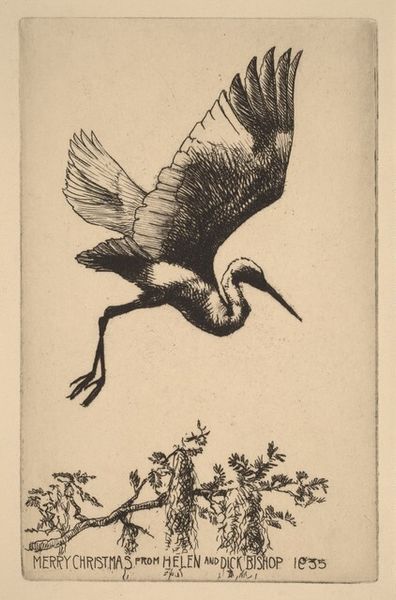
drawing, print, etching
#
drawing
# print
#
etching
#
landscape
#
ukiyo-e
#
figuration
#
realism
Copyright: National Gallery of Art: CC0 1.0
Editor: So, this is "Fall Ducks" by Richard Evett Bishop, and it looks like it's an etching. I'm immediately struck by the sense of movement, like the ducks are frozen mid-flight just for us. What do you see in this piece? Curator: The etching medium itself speaks volumes. Think of how the artist meticulously used acid to bite into the metal, creating those lines. Notice how this meticulous technique invites reflection. The subject too is compelling, evoking primal associations. Bird imagery carries potent symbolism, doesn't it? Freedom, migration, and perhaps a fleeting moment in nature's cycle? How does that resonance of fall and the theme of avian activity impact you? Editor: I definitely get a sense of transition. It makes me think about migration, how some animals are leaving while others are preparing for winter. The level of detail is remarkable, given it's a print. Do you think the artist was trying to capture a specific mood? Curator: Bishop taps into a deeper cultural memory – the hunter-gatherer instinct, the seasonal rhythms that once governed human life more directly. And don't overlook the Ukiyo-e influence, it hints at the interconnectedness between human culture and the natural world, which has an anthropological resonance, wouldn’t you agree? Editor: That's a good point about the interconnectedness. It feels like a realistic scene, but also loaded with meaning beyond just the ducks. It does add an unexpected layer of depth! Curator: Yes, this piece, beyond its realistic rendering, offers us symbols of broader themes related to survival and transition, doesn't it? The beauty is in recognizing the cyclical dance of existence. Editor: This really gave me a new angle to think about visual language! Thanks!
Comments
No comments
Be the first to comment and join the conversation on the ultimate creative platform.
